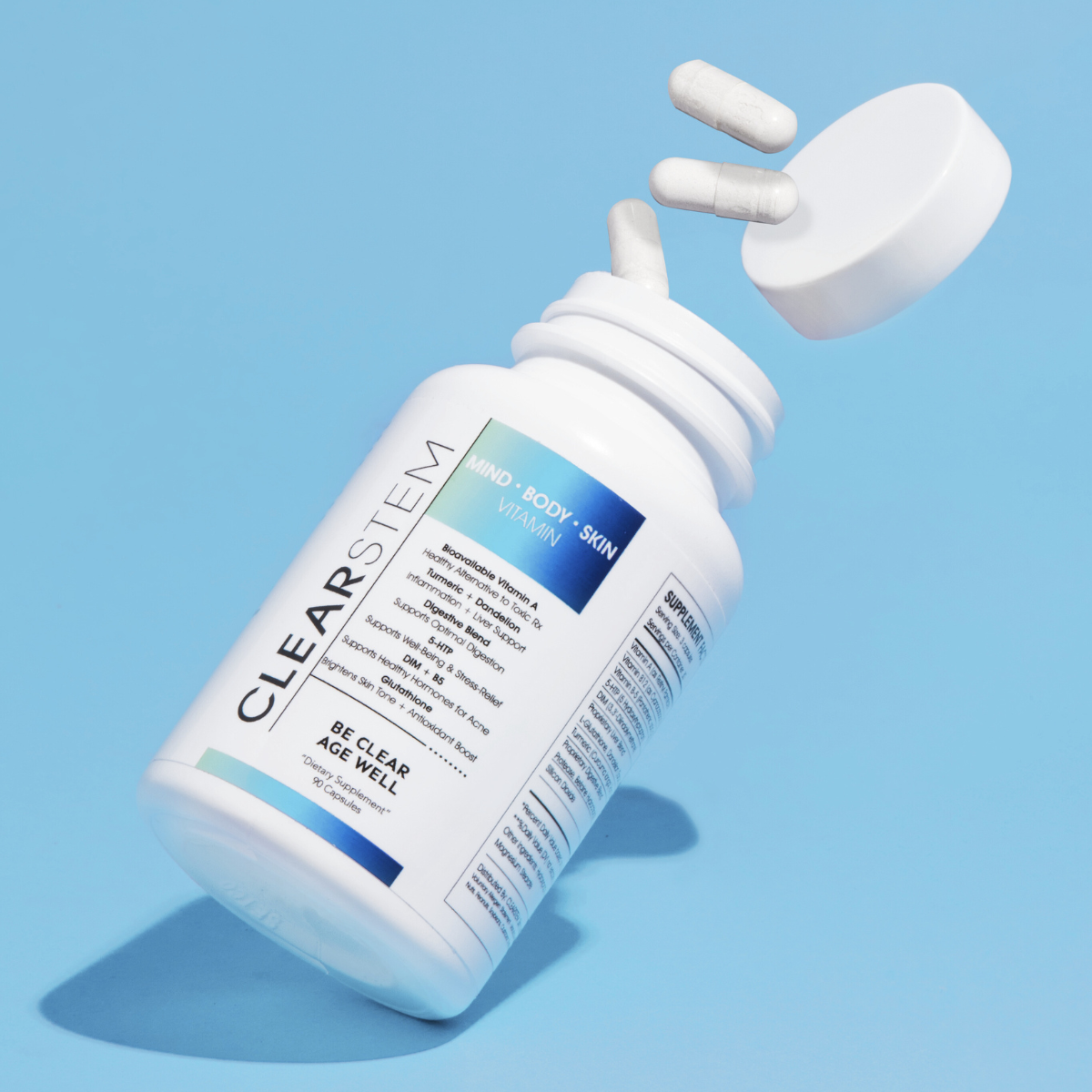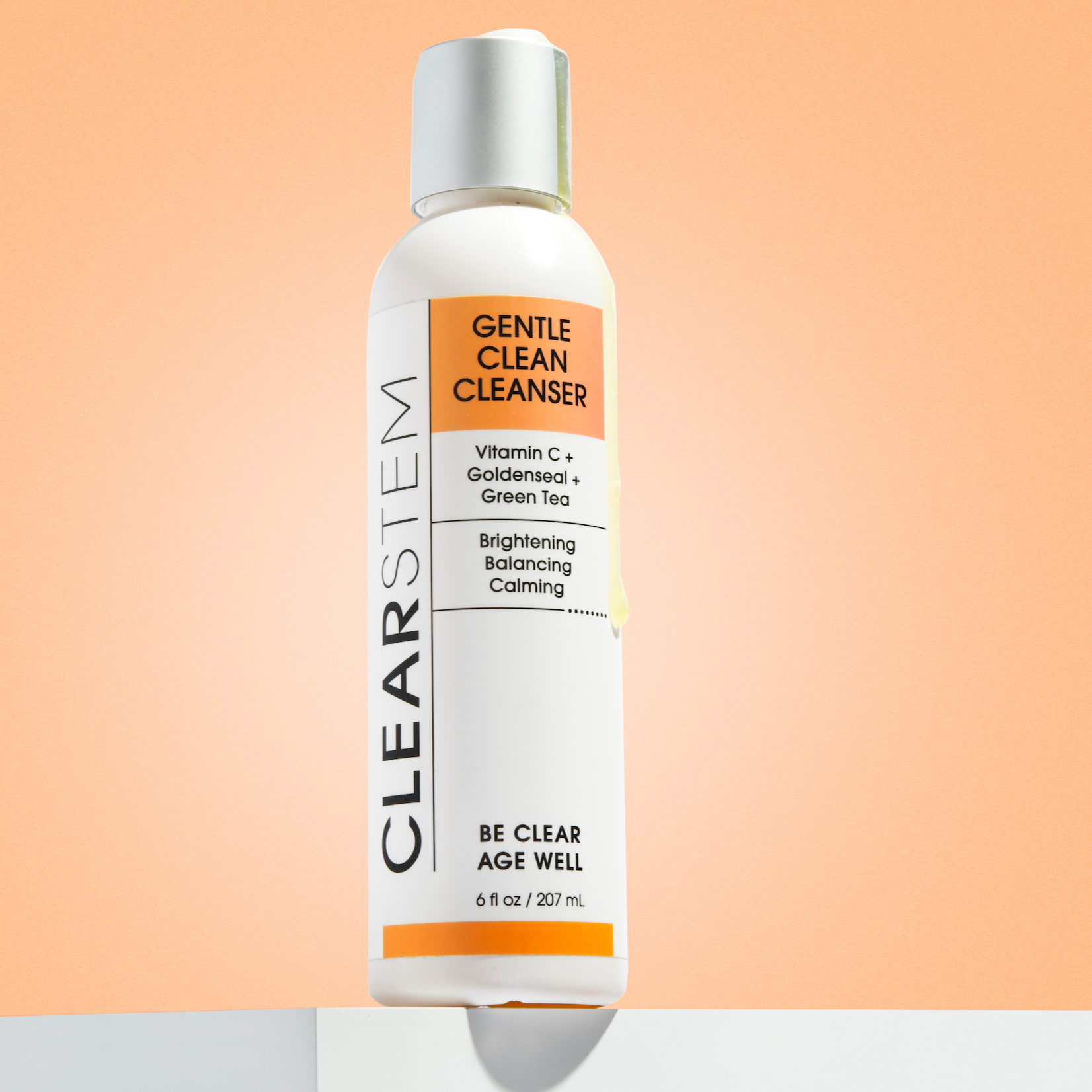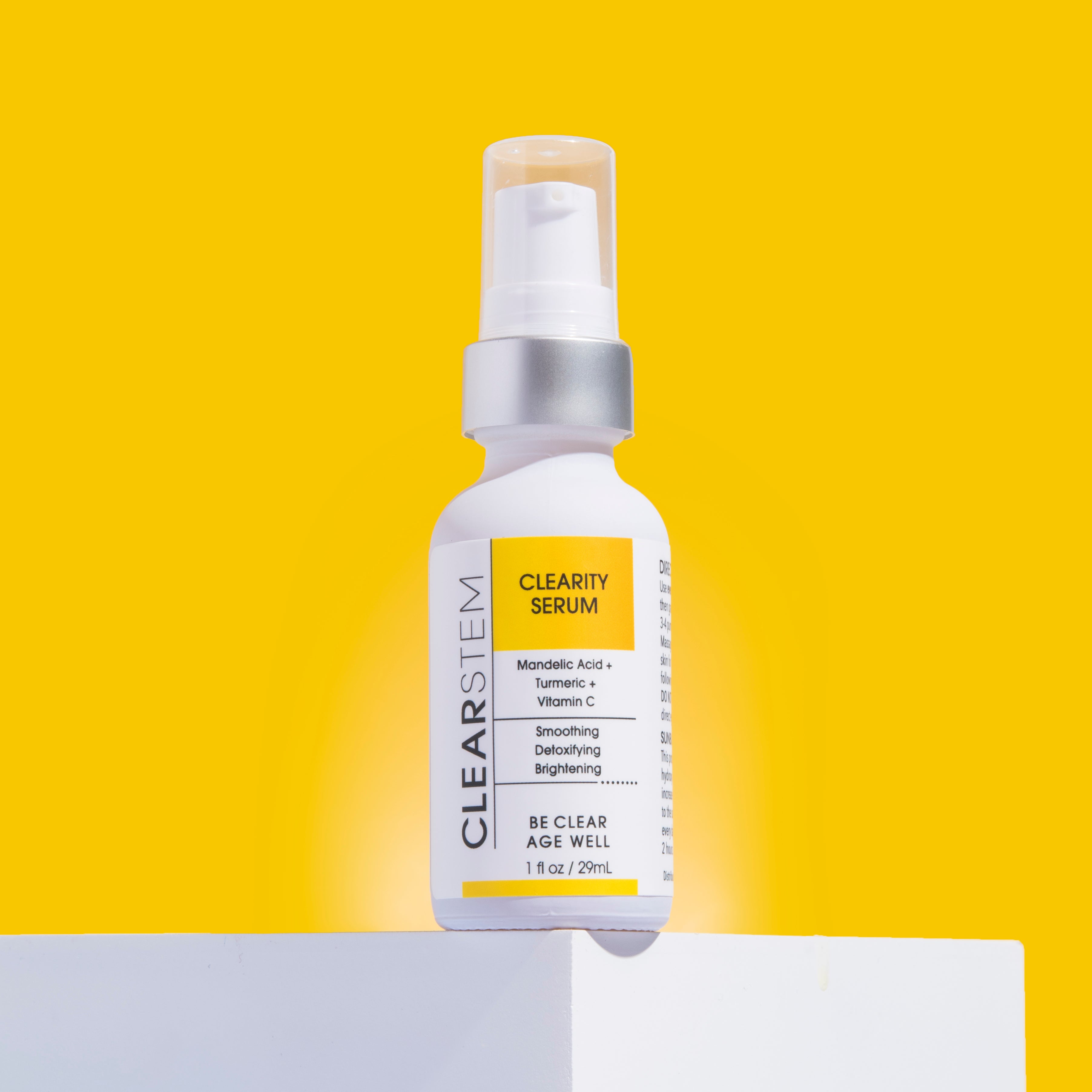Hyperpigmentation is a common skin issue identified by dark patches or brown spots due to excess melanin production. If you’ve recently looked in the mirror and noticed these kinds of facial marks, you might be searching up and down for the best treatment for hyperpigmentation.
Understanding the causes and types of hyperpigmentation allows us to determine treatments and products that can help us the most. In this comprehensive guide to the best treatment for hyperpigmentation on the face, we’ll dive into the latest advancements in dermatology to offer complete and up-to-date tips for preventing and reducing your skin condition so you can maintain a clear and even complexion.
Understanding Hyperpigmentation: Causes and Types
Among the several types of hyperpigmentation, three of the most common are age spots, melasma, and post-inflammatory hyperpigmentation. Here’s a quick overview of each type's main traits and their differences.
- Age spots – Age spots can go by many names. You may know them as liver spots; dermatologists call them solar lentigines. Age spots are brown, tan, or black spots that appear most commonly on the faces and hands of older adults.1 They can look like brown spots or slight skin discoloration.
- Melasma – Melasma typically appears in dark brown, roughly symmetric patches with irregular borders. The most frequent locations where melasma appears are the cheeks, chin, forehead, and nose. While it appears most regularly in pregnant women (earning it the nickname “the mask of pregnancy”), 10% of cases affect nonpregnant women and men with darker skin tones.2
- Post-inflammatory hyperpigmentation – As the name implies, this condition results in spots or darkened patches of skin that appear after inflammatory skin conditions such as acne or eczema.1 This condition can appear anywhere on the body where inflammation-inducing skin conditions develop, including the face, arms, and back.
While each of these conditions are related, they may have different causes. Below, we’ll explore some of the most common causes of these types of hyperpigmentation and explain how you can fix an uneven skin tone.
Causes of Hyperpigmentation Types
Understanding the causes of each hyperpigmentation type will help us discern the proper treatments. Here’s a brief review of the causes for each primary hyperpigmentation type.
-
Causes of age spots – Age spots appear most commonly due to chronic sun exposure, hence why they usually appear on the face and hands—these areas are often left exposed outdoors and are prone to sun damage. Typically, the first signs of this hyperpigmentation appear in middle-aged individuals and can gradually worsen with age.2
- Causes of melasma – This hyperpigmentation type usually occurs during pregnancy due to increased estrogen and progesterone production. However, sun exposure also factors in as a cause, as sunlight triggers the body to produce more melanin—explaining why melasma most often appears on the face, neck, and arms. Melasma can also occur in response to some medications, such as birth control and anti-seizure medicine.3
- Causes of post-inflammatory hyperpigmentation – Just like sun exposure, inflammation causes an increase in melanin production. When it comes to post-inflammatory hyperpigmentation, trauma to the skin can be another cause. Types of skin trauma include wounds and superficial burns.4
Additional risk factors for these conditions are drugs that increase sensitivity to sunlight, acne, and hormonal changes. If you're experiencing hyperpigmentation on your face or body, consult a dermatologist or your regular healthcare provider to determine whether it’s cause for concern.
Consultation and Skin Assessment: Where to Begin
While it can be visually undesirable, hyperpigmentation generally isn’t harmful. However, if your hyperpigmentation bothers or concerns you, the first step is to consult a dermatologist.
A dermatologist can diagnose the specific kind of hyperpigmentation affecting you and identify the most likely cause. Frequently, your dermatologist will request a physical exam and your medical history to aid this process. In rare cases, they may need a skin biopsy to provide more information on the cause.1
Once your dermatologist has determined the cause of your hyperpigmentation, they will recommend the best treatment path. Below, we’ll detail some of the various modern treatments for the skin condition that may be helpful.
Topical Treatments: Products and Ingredients for Hyperpigmentation
A topical medication is applied to a specific place on the body. For hyperpigmentation, this usually takes the form of a cream.
The most common topical medications for treating hyperpigmentation conditions are hydroquinone, tretinoin, corticosteroids, or a combination cream containing all three.2
- Hydroquinone evens skin tone by depigmenting the skin.
- Tretinoin exfoliates the skin containing the epidermal pigment.
- Corticosteroids help block the synthesis and secretion of melanin.
Triple topical therapy contains all three of the above medicines and is often an effective solution for hyperpigmentation or an uneven skin tone. However, it is far from the only form of treatment. We do not necessarily advocate for these options as they have hormone disruptors, but in extreme cases a cycle can be helpful.
Chemical Peels and Exfoliation: Renewing the Skin's Surface
How do chemical peels and exfoliation work differently from topical solutions? A chemical peel is a procedure that can treat all kinds of skin conditions, from wrinkles to scars to discolored skin.
The process is simple: a chemical solution is applied to the skin and peeled away, removing the dead skin cells on the epidermis or the top layer of the skin. Afterward, the new skin that grows back is smoother and usually looks healthier.5
Different degrees of chemical peels can affect deeper layers of skin. A “deep” chemical peel can have more dramatic results but takes longer to recover from. Depending on the severity of your hyperpigmentation, you may opt for a lighter chemical peel, which can be repeated every 2 to 5 weeks as necessary.5
Laser and Light Therapies: Precision in Treating Hyperpigmentation
According to the American Academy of Dermatology Association, laser skin resurfacing and light treatments can be effective for patients already applying medication and protecting their skin from the sun.3
For the treatment of age spots or sun spots, laser treatment or cryotherapy might be the best approach, as hydroquinone has been shown to be ineffective.2
That said, laser resurfacing therapy is still somewhat controversial for addressing hyperpigmentation, as topical medications are cheaper, of greater or equal efficacy, and have a more documented history of success. Therefore, laser and light therapy is generally only recommended when topicals and chemical peels are ineffective on skin discoloration.6
Microdermabrasion and Microneedling: Procedures for Smoother Skin
Microdermabrasion is an epidermal procedure where a dermatologist uses a drill-like tool fitted with a wire brush to lightly and rapidly remove the outermost layer of skin.7
Microneedling is a similar but slightly nuanced procedure in which tiny sterilized needles create micro-punctures in the skin to reduce the appearance of scars and dark spots and improve skin elasticity.8
In comparison to laser therapy, microneedling is less expensive and may be safer for darker skin tones. Microdermabrasion may require multiple sessions to achieve the desired result, but it works well on superficial scars and is known to work well for fairer skin tones.
Combination Approaches: Customized Treatment Plans
There may not be a single ideal solution to cure your case of hyperpigmentation. Even promising treatments can have adverse side effects or long recovery times, forcing patients to try other combinations of methods.
Sometimes, a more effective plan can combine treatment methods to create a custom strategy that works best for the individual’s skin type and medical history. For example, topical medicines are usually the first go-to for hyperpigmentation—but they can also cause the adverse effects of skin irritation and peeling.9 And while chemical peels have proved effective, they are relatively expensive.
Ask your dermatologist which combination of treatments would work best for your skin. No one’s skin conditions are the same, and no treatment presents a one-size-fits-all solution for hyperpigmentation.
Preventive Measures: Sunscreen and Daily Skincare
The best treatment for pigmentation on the face? Prevention.
It isn’t always possible to prevent hyperpigmentation. For example, in the case of melasma, pregnancy is often the leading cause of the condition. However, protecting yourself from harmful solar radiation is essential to alleviate and defend against most harmful skin conditions.
Help to prevent hyperpigmentation and keep your skin even and clear by utilizing sunscreen and healthy skincare practices. Dermatologists recommend broad-spectrum sunscreens of at least SPF 30. Give your skin some extra protection by seeking shade, wearing a wide-brimmed hat, and avoiding the sun during the time of day when it’s strongest.3
Opting for a mineral sunscreen instead of a chemical-based sunscreen can also be beneficial if you have hyperpigmentation. Mineral-based sunscreens containing zinc oxide, titanium dioxide, and iron oxide are ideal for those with sensitive skin. Plus, the heat dissipation of chemical sunscreens can reportedly exacerbate melasma.10
Protect and Heal Your Skin with Science-Backed Solutions from CLEARSTEM
If you’re dealing with one of the forms of hyperpigmentation, you need skincare products designed with your complexion in mind. CLEARSTEM designs serums, supplements, and kits that are safe for protecting and nourishing all skin types, including those with hyperpigmentation.
For melasma and other types of hyperpigmentation, check out our skincare for dark spots and melasma line to restore your confidence in your skin. The award-winning gentle yet powerful exfoliating serum CLEARITY can help revitalize your skin to be brighter, smoother, and clearer.
Do you have acne-prone skin along with hyperpigmentation? CLEARSTEM can help. Explore our skincare for acne-prone skin and hormonal acne supplement, MINDBODYSKIN. Don’t wait to treat your skin to the ingredients it needs. Rejuvenate your complexion from CLEARSTEM today to enjoy happier and healthier skin tomorrow.
Sources:
- Medical News Today. What to know about hyperpigmentation. https://www.medicalnewstoday.com/articles/323808
- Merck Manual. Hyperpigmentation. https://www.merckmanuals.com/professional/dermatologic-disorders/pigmentation-disorders/hyperpigmentation
- American Academy of Dermatology Association. Melasma: Causes. https://www.aad.org/public/diseases/a-z/melasma-causes
- The Journal of Clinical and Aesthetic Dermatology. Postinflammatory Hyperpigmentation. https://www.ncbi.nlm.nih.gov/pmc/articles/PMC2921758/
- Mayo Clinic. Chemical peel. https://www.mayoclinic.org/tests-procedures/chemical-peel/about/pac-20393473
- National Library of Medicine. Lasers for Treatment of Melasma and Post-Inflammatory Hyperpigmentation. https://www.ncbi.nlm.nih.gov/pmc/articles/PMC3461803/
- Healthline. 8 Treatment Options for Hyperpigmentation.https://www.healthline.com/health/beauty-skin-care/hyperpigmentation-treatment#microdermabrasion
- Healthline. Microneedling: Collagen Induction Therapy. https://www.healthline.com/health/microneedling
- Wiley Online Library. Management of hyperpigmentation: Current treatments and emerging therapies. https://onlinelibrary.wiley.com/doi/full/10.1111/pcmr.12986
- Everyday Health. The Difference Between Chemical and Mineral Sunscreen.https://www.everydayhealth.com/skin-beauty/chemical-vs-mineral-sunscreen-whats-difference/










